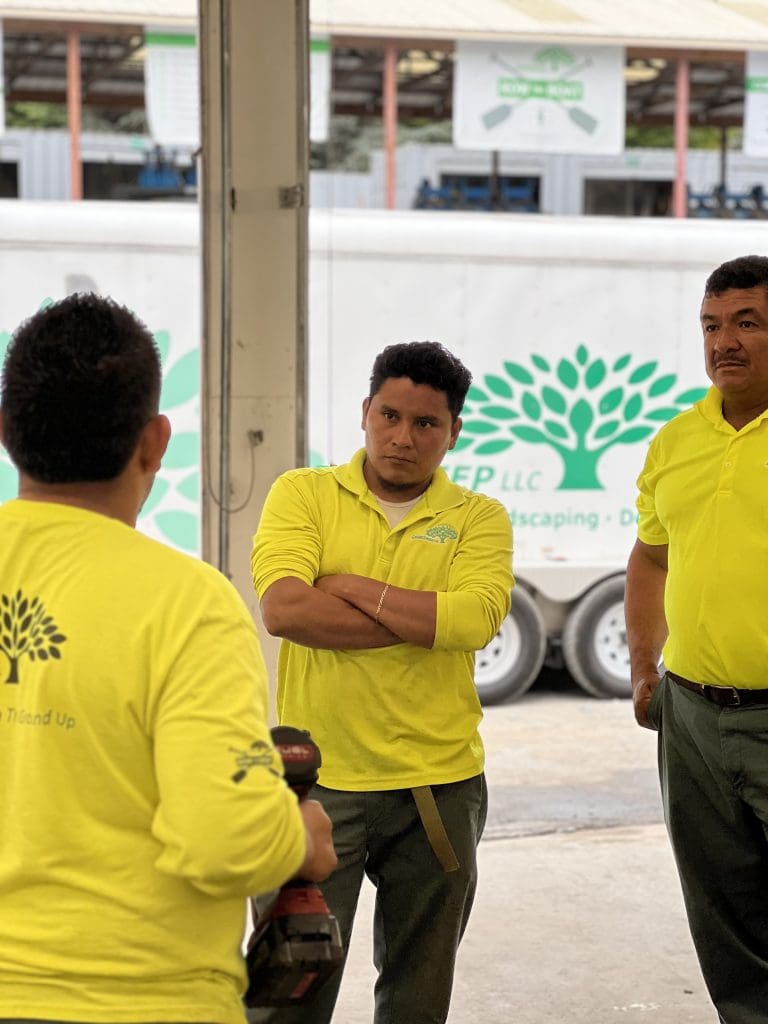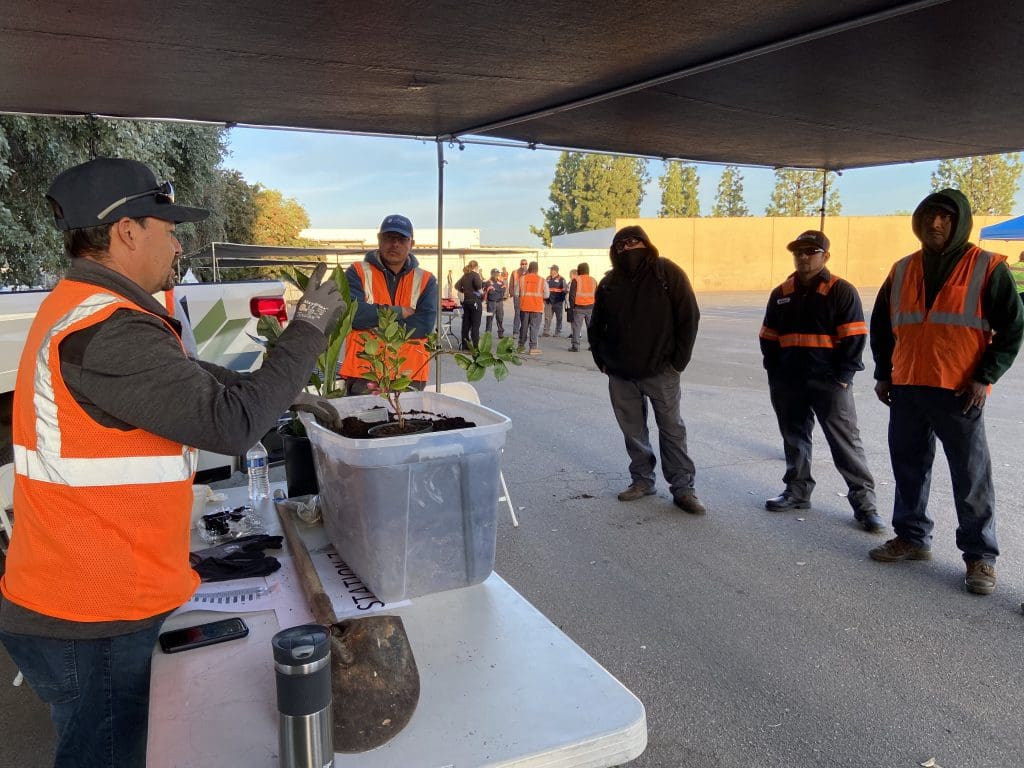
Photo: Rice's Landscapes Redefined
When hiring, finding individuals with a background and skills in the landscape industry is highly desirable. However, any employer can tell you these types of hires are few and far between, but you can go about building your own skilled workforce with a strong training program in place.
As labor challenges continue, more landscape company owners find it easier to hire people who are a cultural fit and then focus on training them.
“We look for people that have a great attitude and put in a good effort,” says Kyle Narsavage, president and owner of GreenSweep, LLC. “Those are the only things that you can control. I can teach you the technical aspects. I got a great team here who can train you. The only two things you can control are your attitude and effort. If you don’t have that, it’s not going to work.”
Prioritize Training From Day One
Just like any other aspect of your business, nothing is going to improve if you don’t make a conscious effort to improve your training efforts. This means starting new employees off on the right foot with proper training during their onboarding.

When it comes to ensuring a new employee is trained on their job functions and can perform them effectively, you need to establish effective performance objectives. These objectives require a condition, behavior and criteria.
For each job, identify your goal, determine the necessary skills, and define the terminal objective (what they do) and the enabling objective (what you measure).
At EarthWorks, Inc., new hires spend a week with a trainer covering topics including work quality and various safety aspects. After working with a crew for a week, the trainer conducts check-ins to make sure the new hire isn’t having any problems. If the new employee is struggling, they can be assigned to a different crew or utilize different skillsets.
Create A Training Portal
Training portals are another method to help your team become more knowledgeable. North Point Outdoors partnered with Greenius to create a designated course curriculum and ensure that everyone receives the same level of training. Employees must complete a series of modules before they can ‘graduate’ from North Point Outdoors.
Similarly, Russell Landscape Group hosts Russell Landscape University through the platform Litmos, which provides employees access to everything from proper string trimming techniques to business management practices. The company can track employees’ activity and see when they have not completed certain training modules.
Bryce Christianson, founder and managing member of Titan Sitework Contracting, says using learning management software is particularly helpful with safety training.
“Before, everything was out of binders,” Christianson says. “Now, I can set someone up on a computer and put them through the first two hours of training, whereas before, a manager would have to grab that binder, explain the process and take 30 or 45 minutes just to get him set up and acclimated to the program, and then be available for questions.”
Host Annual Training Day
If you have a larger operation or multiple branches, hosting an annual training day can serve as a day to get everyone on the same page and cover a number of different topics.

LaBahn’s Landscaping implemented an annual training day in 2022 and covered everything from driver safety and equipment care to human resources and planting techniques. Company president Chris Gillespie says an untrained workforce can only be so efficient.
“You will eventually hit a plateau, but if you think you’ve already achieved peak efficiency, you are sadly mistaken,” Gillespie says. “Companies can easily reduce man-hours needed to service properties by up to 25 percent with a well-trained workforce. Your team’s goal should be to have the efficiency of a racing pit crew. Playing the long game with your training program will reap many rewards in the form of increased profits.”
Take Advantage of Downtime
Rainy days or the off-season can be another prime time to focus on training your team. During the off-season, Landscape America’s crews will gather at local garden centers to cover botany and horticultural topics while their hardscape crews spend time at the nearby Unilock plant for training on interlocking brickwork.
Rice’s Landscapes Redefined has a dedicated Training Lab where their staff focuses on plant ID, their planting process, irrigation installation and repair, low voltage lighting installation and repair. They can learn techniques hands-on before ever setting foot on a property. In their main office building, they have a Learning Lab for more academic training.
Incentivize Education
If you want your team to actively pursue additional training and education beyond what their current role calls for, tying training and certifications to raises can be effective.
Aiello Landscape has set education goals for their employees. Employees who have been with the company for 90 days must be able to name 25 plants, 50 tools, 11 or 12 safety items and answer 10 general horticulture questions.
They must pass this questionnaire in order to receive their 90-day uniform and a raise. As they pass more training tests at different checkpoints, Aiello’s employees are able to earn more money.
At Oasis Turf & Tree, team members receive their first raise when they earn their Ohio Department of Agriculture license.
Utilize NALP Training Tools
If you don’t have the time to create a formalized training program yourself, the Landscape Technician Bootcamp saves you from having to reinvent the wheel. This gives your trainers a pathway to offer classroom and hands-on training for your crews.
The curriculum is based on the Landscape Industry Certified Exterior Technician exam and includes 44 detailed lesson plans grouped in five categories. You can use the manual to schedule the instruction at your own pace. It also prepares your team for the Landscape Industry Certified Exterior Technician exam.
There is also the Landscape Management Certificate course, which is a quick and easy way to ensure your team members have mastered the basic landscape management knowledge needed to succeed. This course is available in English or Spanish and is self-paced online.
“Instead of thinking, why would you spend this money and they leave, think about what if you spend this money and they stay,” says Joe Lewis, COO for Yard Solutions. “Don’t have a defeatist mentality. Talent costs money, plain and simple in any industry. Ours is not excluded from that. If you invest in your people, they will stay.”

